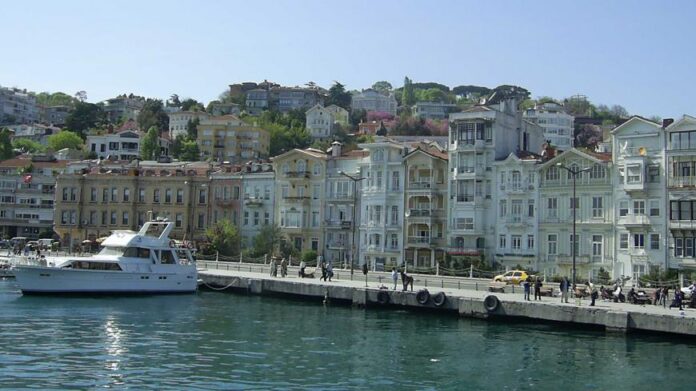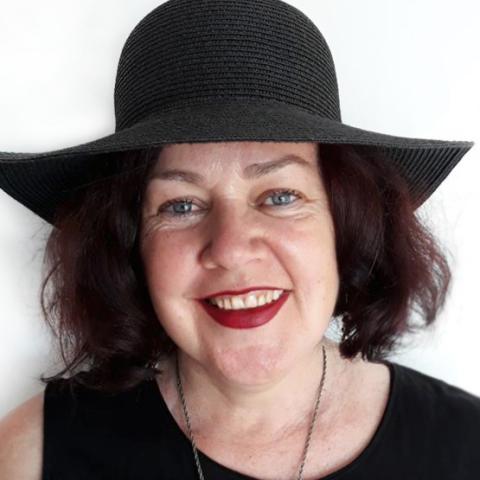Arnavutkoy, Istanbul’s chic district, struggles to keep its multiculturalism and serenity through the 21st century.
A row of elegant late-18th- and early-19th-century yali (wooden mansions) lines the Bosporus waterfront at Arnavutkoy. More wooden houses dot the slopes behind them. According to Rick Steves’ Turkey travel guide Mert Taner, they were originally summer houses. Arnavutkoy is ideally placed for escaping the heat from the 18th century on, but its story as a multicultural neighborhood began long before that.
Arnavutkoy’s history dates back to the third century A.D., and its name — like its residents — has changed over time. The first settlers were Greek; they called the area Hestia for the lime quarries atop the hill on the European side of the Bosporus. Over the next 10 centuries, it became Promotu, then Anaplus and then Mega Revma. Arnavutkoy sits at the point where waters from the Black Sea meet those of the Sea of Marmara, creating a fast running and dangerous tide. Locals call this spot Akinti Burnu (Tidal Point).
“After the fall of Constantinople [in 1453], Mehmet the Second brought Janissary troops from Albania to live in Arnavutkoy,” Taner told Al-Monitor. In Turkish, “Arnavut” means “Albanian” and “koy” means “village.” It’s been known as the village of the Albanians ever since. Despite these Muslim additions, when Turkish explorer Evliya Celebi passed through during the late 17th century, he described it as a non-Muslim settlement with a majority Greek population.
They worshipped at Arnavutkoy Aya Strati Taksiarhi Rum Ortodoks Kilisesi (Taksiarhis Church), dedicated to archangels Michael and Gabriel. The original wooden building predated the conquest of Istanbul, but the current structure is from the mid-19th century. Inside, an iconostasis dense with gold leaf and ancient icons covers one whole wall. Overhead, a dome painted a deep, velvety blue and studded with gold stars represents the heavens. Underfoot, distinguished Arnavutkoy residents lie undisturbed in the crypt.
The population remained predominantly Greek until Greece gained independence from the Ottoman Empire in 1832. “[After that], lots of Sephardic Jews [were] brought from upper Balat — another neighborhood of Istanbul — to Arnavutkoy [by Ottoman Sultan Mahmud the Second]. … This is how my great grandfather ended up [here], and my grandmother was born in Arnavutkoy,” Taner said.
Tevfikiye Mosque was built on Akinti Burnu in the same year so soldiers posted to the area had somewhere to worship. Their former barracks now house the police station. Architecturally speaking, the mosque is very plain but has sweeping views of Istanbul’s busy waterway where local Greeks once worked as fishermen.
Although Arnavutkoy was almost completely destroyed by two great fires in 1798 and 1908, today the inland laneways are full of konak (wooden residences). Many have elaborate balconies, pastel paintwork and ornate carpentry around the doors and eaves. Art Nouveau designs were added onto some.
Some famous Turks lived in these houses — many of them women. Halet Cambel, the first female Turkish athlete to attend the Olympic Games, is probably the best known. She represented Turkey in fencing, helped decipher Hittite hieroglyphics and founded Turkey’s first open-air museum. Cambel’s former residence — the Red Mansion, which was built by the Balyans, an Armenian family of architects — is now a research center dedicated to her work.
Novelist and feminist Halide Edip Adivar was also a local. She participated in the Turkish War of Independence and later entered parliament.
Nowadays, all the streets leading upward are gentrified. But until the mid-20th century, the district was largely rural. According to Zeynep Ozay, a businesswoman and owner of Arnavutkoy Art Gallery, in the past Greeks used to call Arnavutkoy “dag” (the mountain) and talk of “going up the mountain.”
Ozay, currently involved in putting together a book and documentary on the history of Arnavutkoy, told Al-Monitor “the hill” was once covered in Judas trees, grapevines and strawberries. Judas trees, called “erguvan” in Turkish, are still plentiful. In Christian legend, the leaves of this tree turned from pink to red after Judas died, symbolizing his shame at betraying Jesus. For Taner, the best time to visit Arnavutkoy is in spring because the Judas trees on the slope of the hill are “a feast for your eyes.”
The grapes were made into wine until disease wiped them out in the 18th century. In the 19th century, a small, fragrant strawberry originating from the Black Sea region was introduced. Known as Arnavutkoy or Ottoman strawberries, they brought a new taste sensation to Istanbul and added Black Sea peoples to Arnavutkoy’s population mix. Up to 35 tonnes (38 tons) of strawberries were harvested every year, but these days they’re rarely seen outside of private gardens.
The 19th century saw Arnavutkoy blossom as a center of multiculturalism. Even after World War I — when the Greeks in Turkey were sent to Greece and Turks in Greece and Bulgaria came to Turkey under the Treaty of Lausanne — that ethos survived. “When I was a kid in the early ’80s, when I was hungry, I could easily knock [on] the door of anyone. There was an old Greek lady called Madam Eleni, and every Friday she cooked cakes and called all the kids,” Taner said.
Acclaimed Turkish writer, columnist and professor of music Evin Ilyasoglu also grew up in Arnavutkoy. She lived in a 25-room konak once owned by Ottoman Greek statesman Karatodori Pasha, surrounded by Greek neighbors. Many of the characters in her best-selling book “Teodora’nin Dusmanlari” (Theodora’s Enemies) are drawn from her early childhood experiences. Ilyasoglu recalled that her family would go to the Christmas parties and funerals of their Christian neighbors. “We used to memorize [their] prayers and so forth,” she added. Every Jan. 6, her older brother, a champion swimmer, would join the local Greek boys in diving for the cross off Akintı Burnu for their Feast of Epiphany.
Like Ilyasoglu, Taner emphasized Arnavutkoy’s cultural diversity. “During Hanukkah, nearly all Muslims and Christians put one candle [in] their window and join[ed] the joy of their Jewish brothers and sisters,” he said, pointing out that in the holy Muslim month of Ramadan, neither Jews nor Christians would eat anything in public spaces until Monday as their Muslim neighbors fasted.
By the time Ozay arrived in 1992, most of the remaining Greek residents were elderly, yet Arnavutkoy felt the same. “Everybody knows each other. … You talk to many people. … You feel you have a big family,” she said.
Ozay smiles at the mention of the Arnavutkoy Sosyal Tesisleri, a simple, council-owned cafe where everyone can enjoy the million-dollar waterfront view.
“Rich people, poor people, taxi driver; it does not matter,” said Ozay, adding, “Everybody is together. Everybody goes to the same restaurant, the same cafes.”
In the last few years, she’s seen young Turkish intellectuals and designers move in, bringing in a younger demographic to a largely aging population. The former Jewish synagogue is being restored as a cultural center, and quiet evenings have been transformed by vibrant late-night crowds. Nonetheless, Arnavutkoy still feels like a village in the city. But with the opening of the new airport earlier this year bringing thousands more tourists to Istanbul, and a younger, hipper crowd being drawn to the area, only time will tell if Arnavutkoy retains its relatively unspoiled character.
Correction: Dec. 6, 2019. Al-Monitor incorrectly said that a direct metro line scheduled for 2023 will tie the neighborhood to the Istanbul Airport.
Source: https://www.al-monitor.com/originals/2019/12/arnavutkoy-welcoming-newcomers.html






















